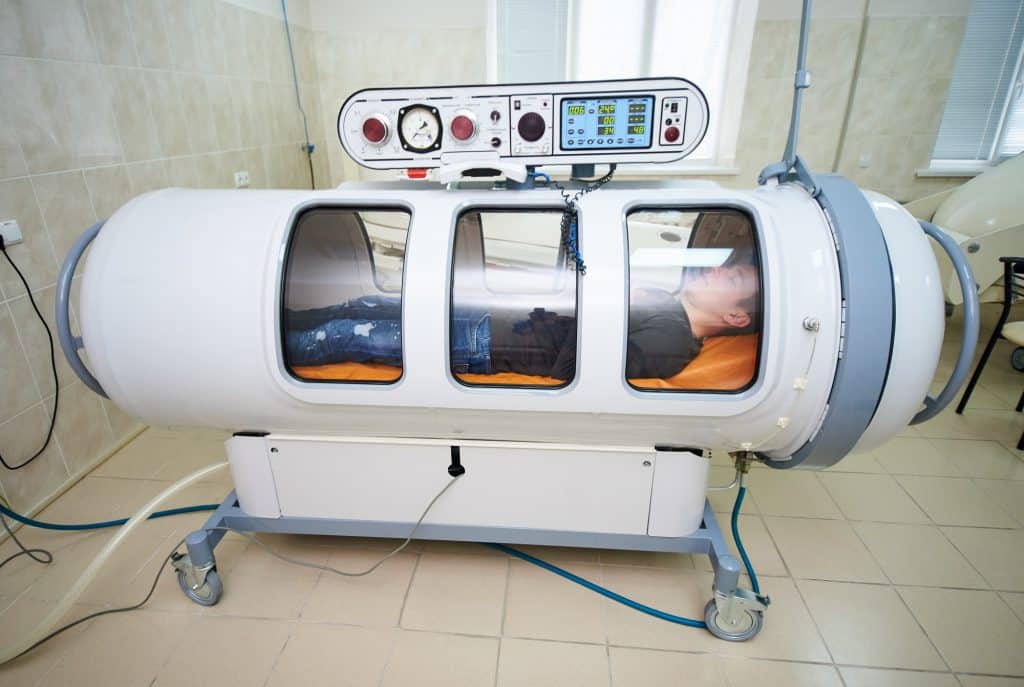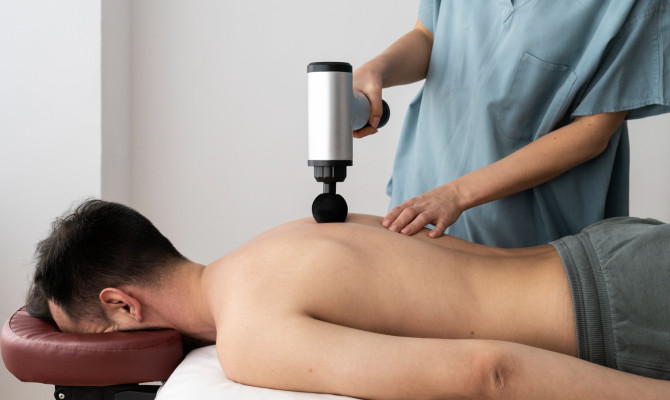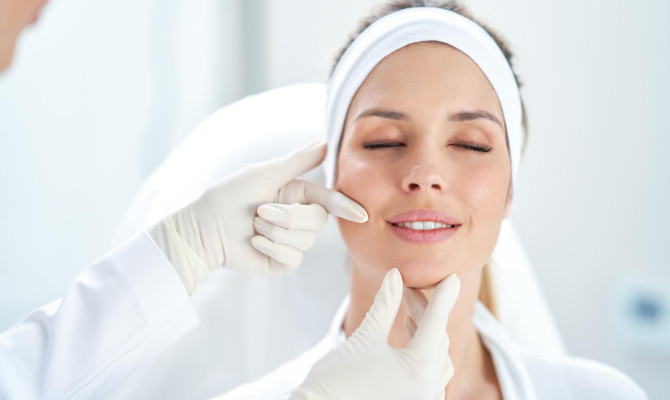Hyperbaric Oxygen Therapy: What do I need to know?

- Hyperbaric oxygen therapy
- 17 Aug 2023
Overview
What is Hyperbaric oxygen therapy?
Hyperbaric oxygen therapy is a medical procedure in which a patient is subjected to pure oxygen at a pressure more significant than the atmosphere. The patient is placed inside a hyperbaric chamber, a specially constructed space where the pressure can be raised to two or three times that of normal pressure. It is used to treat several medical conditions.
We shall explore its benefits and clinical applications in the following article.

Uses

Uses of Hyperbaric oxygen therapy
It is used to treat a variety of medical conditions. Here are a few examples:
- Management of Decompression sickness
- Helps in Gas gangrene treatment
- Chronic wounds healing
- Radiation-induced tissue damage management
- Carbon monoxide poisoning treatment
- Treatment of Osteomyelitis
- Promotes recovery of Non-healing skin grafts or flaps
- Aids in healing certain neurological conditions
- Helps in treatment of certain types of cancer
Management of decompression sickness
- It’s also referred to as “the bends.” Scuba divers and those who frequently experience abrupt air pressure changes are susceptible to this illness.1Uses| Researched based study from Nlm.nih.gov
Treatment of a gas gangrene
- It treats gas gangrene, a severe bacterial illness that thrives in low-oxygen settings. It helps prevent bacteria formation and promotes healing by providing large amounts of oxygen.1Uses| Researched based study from Nlm.nih.gov
Helps in healing of chronic wounds
- Chronic wounds, such as diabetic foot ulcers, nonhealing surgical wounds, and radiation injuries, can be effectively treated with it to speed up healing. The body’s immune response is supported by increased oxygen availability, promoting angiogenesis (developing new blood vessels) and tissue repair.
Supports treatment of Radiation-induced damage
- It can be used as a supportive treatment for radiation-induced damage, such as radiation cystitis (bladder inflammation) or radiation proctitis (rectal inflammation). It helps reduce associated symptoms, increase tissue healing, and decrease inflammation.
Treatment of Poisoning by carbon monoxide
- In cases of carbon monoxide poisoning, it is used. The rapid removal of carbon monoxide from the bloodstream and promotion of its replacement with oxygen by high-pressure oxygen help helps prevent long-term effects.
Osteomyelitis
- HBOT can be used as a substitute therapy in cases of severe bone infection. Increased oxygen levels help prevent disease, accelerate tissue repair, and enhance antibiotic efficiency.1Uses| Researched based study from Nlm.nih.gov
Promotes healing of non-healing skin grafts or flaps
- When the blood flow to grafts or flaps is compromised, it promotes healing. Increased oxygen flow helps with tissue integration and graft survival.
Supports management of certain neurological disorders
- It has shown potential in treating ailments like stroke and traumatic brain injury. The elevated oxygen levels aid in neurological rehabilitation by reducing inflammation and supporting the repair of brain tissue.
Helps in treating certain cancer types
- It is occasionally used with other therapies to treat specific cancers, such as radiation-resistant tumors. Increasing oxygen availability and encouraging tumor sensitivity can increase the efficacy of radiation therapy or specific chemotherapy medications.1Uses| Researched based study from Nlm.nih.gov
The Procedure
How is it performed?
Preparation
- The therapy is carried out in an isolated chamber. You will be comfortable lying within the sealed, clear chamber throughout the operation.
- Getting ready for the session, you will be asked to remove any jewelry, watches, or other possibly harmful things.
Pressurization
- The pressurization process will start when you are prepared and seated comfortably on a bed or padded table. This suggests that internal pressure will eventually rise.2The procedure| Researched based study from Nlm.nih.gov You can experience anything that makes you feel like you’re in a lift or an airplane during takeoff.
Breathing pure oxygen
- As the pressure rises, you’ll start breathing only pure oxygen through a mask or hood. More oxygen will be provided than you would typically breathe in the air. During the session, it’s crucial to relax and breathe regularly.
Duration of treatment
- Each HBOT session can run anywhere from 60 to 90 minutes, but this can vary. Based on your illness and the intended outcomes of the therapy, your doctor will decide the right length of time for your treatment.
Decompression
- Allowing your body to adapt to the pressure shift is gradual and regulated. Similar to an airplane’s popping sound ascending or descending, you may sense something similar in your ears.
Leaving the chamber
You’ll be directed out once the chamber’s pressure returns to normal2The procedure| Researched based study from Nlm.nih.gov
How long does hyperbaric oxygen therapy have an effect?
- The results may be more gradual and cumulative over several sessions for chronic diseases, including non-healing wounds or specific neurological disorders.
- It can have rapid and considerable advantages in acute circumstances like carbon monoxide poisoning or decompression sickness. If the underlying problem is treated or properly maintained once the treatment is finished, the results should last.
Factors, including general health and underlying diseases, can affect the consequences.2The procedure| Researched based study from Nlm.nih.gov
How frequently should hyperbaric oxygen therapy be performed?
- The frequency may change depending on the treatment condition and the doctor’s recommended treatment strategy. It might range from many sessions per week to up to 30 sessions.
Complications
What are the risks and complications of Hyperbaric oxygen therapy?
Although it is typically considered safe, there are always potential risks, difficulties, and side effects. Here are a few examples:3Side effects| Researched based study from Nlm.nih.gov
- Barotrauma
- Oxygen toxicity
- Claustrophobia
- Temporary vision changes
- Fire risk
- Changes in blood sugar levels
- Bar odontalgia
- Temporary fatigue or lightheadedness
Barotrauma
- Barotrauma, or damage to the body’s air-filled cavities like the ears, sinuses, or lungs, can result from pressure shifts. Pain, discomfort, sinus pressure, or even lung damage may come from this.
- During the procedure, you will be instructed to equalize the pressure in your ears to reduce the risk.
Oxygen toxicity
- Oxygen poisoning can result from prolonged exposure to high oxygen levels. This may show up as seizures, lightheadedness, nausea, twitching muscles, or dizziness.3Side effects| Researched based study from Nlm.nih.gov
- Oxygen poisoning during the sessions is uncommon, though it is carefully monitored.
Claustrophobia
- Some people may feel claustrophobic or anxious when confined within the hyperbaric chamber.
- Sharing any worries with the medical staff in advance is crucial to handle these emotions.
Temporary changes in vision
- A few patients may experience transient vision alterations during or after sessions, such as nearsightedness or visual blurring. Once treatment is over, they tend to be reversible and disappear.
Fire risk
- HBOT uses oxygen, which raises the possibility of a fire. You must take off any flammable items, such as clothing, oils, or cosmetics, before entering the chamber for safety reasons.
Fluctuating blood sugar levels.
- It occasionally impacts blood sugar levels, especially in those with diabetes. Blood glucose levels may need to be closely monitored during and after therapy.
Bar odontalgia
- Rarely, HBOT can cause dental pain or exacerbate pre-existing dental issues.
Temporary drowsiness or weariness
- After the treatment, some people may feel brief weariness or dizziness. Following therapy, taking it easy and resting until any discomfort passes are advised.3Side effects| Researched based study from Nlm.nih.gov
Contraindications
Who should avoid using Hyperbaric oxygen therapy?
Some medical issues and contraindications may prevent some people from receiving this medication. Some of them consist of the following:4Contraindications| Researched based study from Nlm.nih.gov
Untreated pneumothorax
- If a pneumothorax is not already treated, HBOT can aggravate it since it raises pulmonary pressure.
Uncontrolled, high fever
- People with uncontrolled high fever may risk developing subsequent issues since it can raise body temperature.
Active chemotherapy
- When taken with HBOT, several oxygen-sensitive chemotherapy drugs can lose effectiveness or become hazardous. Nevertheless, this is dependent on the particular medications being utilized.
Asthma or COPD, among other respiratory disorders.
- In those with COPD or asthma, it may raise the chances of elevated oxygen levels.
Claustrophobia
- People with acute claustrophobia may have anxiety or panic attacks as a result.4Contraindications| Researched based study from Nlm.nih.gov
Pregnancy
- Even though it is typically considered safe during pregnancy, speaking with a doctor to assess the benefits and dangers for both the mother and fetus is essential.
Serious ear issues
- It involves pressure shifts, which may have an impact on the ears. People with recent ear surgery, severe untreated ear infections, or specific middle ear problems may be at risk for adverse effects.4Contraindications| Researched based study from Nlm.nih.gov
Any feedback on this article?
 This Articles content was accurate
This Articles content was accurate Very Informative Article
Very Informative Article I have a question or a comment
I have a question or a comment
 This article contains inaccurate content
This article contains inaccurate content This article was not helpful
This article was not helpful I have a question or a comment
I have a question or a comment
We appreciate your helpful feedback!
Checkout our social pages
References
-
National Library of Medicine
Hyperbaric Oxygen Therapy | Benefits
-
National Library of Medicine
Hyperbaric oxygen therapy | Procedure
-
National Library of Medicine
Hyperbaric Oxygen Therapy: Side Effects Defined and Quantified | Side effects
-
National Library of Medicine
Hyperbaric Contraindications | Contraindication




































